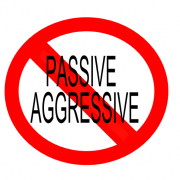Leadership Planning in 2017: Create Your Mission Statement
 Dorothy in the “Wizard of Oz” movie famously proclaimed to her dog, “Toto, I’ve a feeling we’re not in Kansas anymore.” Well, neither are we!
Dorothy in the “Wizard of Oz” movie famously proclaimed to her dog, “Toto, I’ve a feeling we’re not in Kansas anymore.” Well, neither are we!
In these transformative times, it’s essential to insure that your mission statement mirrors the direction in which your organization must travel. Your mission statement from two years ago needs to be created anew and critiqued for its timeliness and purpose.
This will take some time, which it should so that the result is worth the effort. It is not a one-hour conference call. Gathering stakeholders and getting them to focus on this will be key to creating a mission statement that everyone can buy into.
To start, here are a few key questions:
- What type of organization do you want to be known as?
- Are you proud of the statement?
- Is your team inspired by it?
- Who curated it? When?
Your Mission is Your Foundation
Your mission statement is the foundation on which you then build your corporate behavior. It’s also an ethos that can/will permeate your organization. Many of my clients go deep with this process. It’s quite valuable and healthy to pinpoint specific behaviors with which you will govern your company. It’s the litmus test to so many decisions you and your executive team will make throughout 2017.
Does Your Team Get It?
A mission statement is also a recruitment evaluation tool. As you interview throughout the year, look for individuals you feel can embrace your mission statement. As you coach your “A”, “B” and “C” players reflect on this mission statement and notice they’re level of connection and ownership of it. In my next post, we will look at what to do about those who don’t get it.
Does the Outside World Get It?
It’s all well and good that you create a mission statement that works internally. However, does it resonate with clients, partners, prospective employees? How people describe your company and its achievements “out there” is critical in shaping your company’s brand. A few questions to ask here are:
- What adjectives do you want clients and the general public to use to describe your organization?
- How important is it for everyone to embody these behaviors?
- What behaviors will you commit to?
- What behaviors will distance you from your competitive set?
How Does Your Mission Shape Your Culture?
Once you create your cultural values you, on a de facto basis, create a covenant of behavior with your organization. That’s how powerful this process can be.
This set of values governs how people relate to one another, procure business and manage client relationships.
Some companies labor over their mission statement…intensely choosing each and every word after much debate. But then, when it’s “done” it disappears from the day-to-day culture exhibited by those who represent the mission….your teams! They must have a sense of ownership for the mission if it is to become a guiding force behind everything the company sets out to achieve. Get your teams involved and ask them these questions:
- What is our culture based on?
- How important is hard work?
- How important is having a team of hungry executives striving for strong client relationships?
- How important is winning in the marketplace in 2017?
- How essential is new business versus driving existing client loyalty?
Creating a new mission statement at this time of year is a very rewarding, healthy process to go through. It instills in everyone a sense of pride, ownership and responsibility to your organization and the difference it makes in the world. The world needs it.
Do you know your company’s mission statement? Does everyone? Let me know what help you need. -SG









